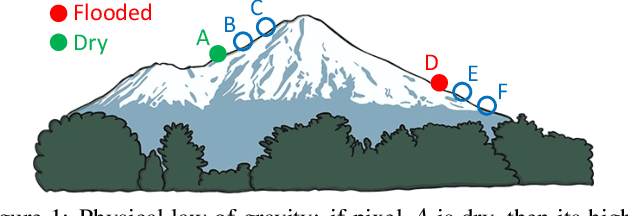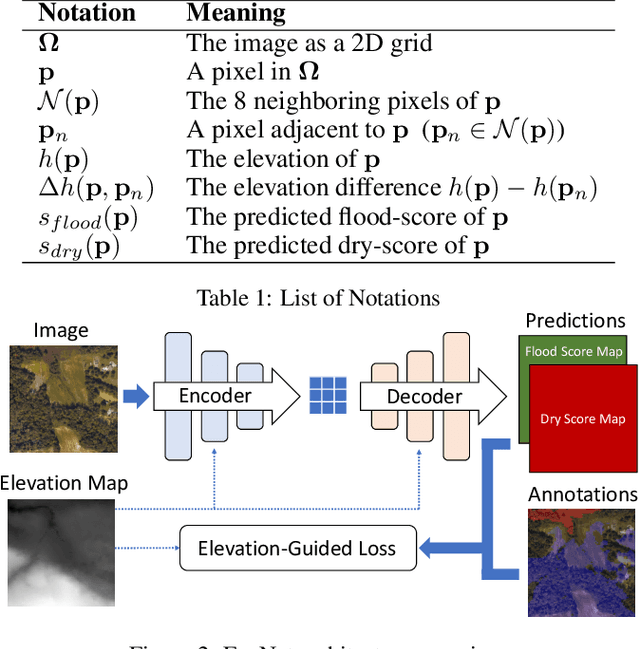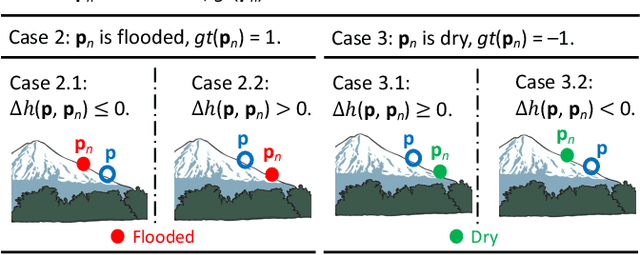Zhe Jiang
Unlocking a New Rust Programming Experience: Fast and Slow Thinking with LLMs to Conquer Undefined Behaviors
Mar 04, 2025Abstract:To provide flexibility and low-level interaction capabilities, the unsafe tag in Rust is essential in many projects, but undermines memory safety and introduces Undefined Behaviors (UBs) that reduce safety. Eliminating these UBs requires a deep understanding of Rust's safety rules and strong typing. Traditional methods require depth analysis of code, which is laborious and depends on knowledge design. The powerful semantic understanding capabilities of LLM offer new opportunities to solve this problem. Although existing large model debugging frameworks excel in semantic tasks, limited by fixed processes and lack adaptive and dynamic adjustment capabilities. Inspired by the dual process theory of decision-making (Fast and Slow Thinking), we present a LLM-based framework called RustBrain that automatically and flexibly minimizes UBs in Rust projects. Fast thinking extracts features to generate solutions, while slow thinking decomposes, verifies, and generalizes them abstractly. To apply verification and generalization results to solution generation, enabling dynamic adjustments and precise outputs, RustBrain integrates two thinking through a feedback mechanism. Experimental results on Miri dataset show a 94.3% pass rate and 80.4% execution rate, improving flexibility and Rust projects safety.
NVR: Vector Runahead on NPUs for Sparse Memory Access
Feb 19, 2025Abstract:Deep Neural Networks are increasingly leveraging sparsity to reduce the scaling up of model parameter size. However, reducing wall-clock time through sparsity and pruning remains challenging due to irregular memory access patterns, leading to frequent cache misses. In this paper, we present NPU Vector Runahead (NVR), a prefetching mechanism tailored for NPUs to address cache miss problems in sparse DNN workloads. Rather than optimising memory patterns with high overhead and poor portability, NVR adapts runahead execution to the unique architecture of NPUs. NVR provides a general micro-architectural solution for sparse DNN workloads without requiring compiler or algorithmic support, operating as a decoupled, speculative, lightweight hardware sub-thread alongside the NPU, with minimal hardware overhead (under 5%). NVR achieves an average 90% reduction in cache misses compared to SOTA prefetching in general-purpose processors, delivering 4x average speedup on sparse workloads versus NPUs without prefetching. Moreover, we investigate the advantages of incorporating a small cache (16KB) into the NPU combined with NVR. Our evaluation shows that expanding this modest cache delivers 5x higher performance benefits than increasing the L2 cache size by the same amount.
Physics-Guided Fair Graph Sampling for Water Temperature Prediction in River Networks
Dec 21, 2024



Abstract:This work introduces a novel graph neural networks (GNNs)-based method to predict stream water temperature and reduce model bias across locations of different income and education levels. Traditional physics-based models often have limited accuracy because they are necessarily approximations of reality. Recently, there has been an increasing interest of using GNNs in modeling complex water dynamics in stream networks. Despite their promise in improving the accuracy, GNNs can bring additional model bias through the aggregation process, where node features are updated by aggregating neighboring nodes. The bias can be especially pronounced when nodes with similar sensitive attributes are frequently connected. We introduce a new method that leverages physical knowledge to represent the node influence in GNNs, and then utilizes physics-based influence to refine the selection and weights over the neighbors. The objective is to facilitate equitable treatment over different sensitive groups in the graph aggregation, which helps reduce spatial bias over locations, especially for those in underprivileged groups. The results on the Delaware River Basin demonstrate the effectiveness of the proposed method in preserving equitable performance across locations in different sensitive groups.
A Fast AI Surrogate for Coastal Ocean Circulation Models
Oct 19, 2024



Abstract:Nearly 900 million people live in low-lying coastal zones around the world and bear the brunt of impacts from more frequent and severe hurricanes and storm surges. Oceanographers simulate ocean current circulation along the coasts to develop early warning systems that save lives and prevent loss and damage to property from coastal hazards. Traditionally, such simulations are conducted using coastal ocean circulation models such as the Regional Ocean Modeling System (ROMS), which usually runs on an HPC cluster with multiple CPU cores. However, the process is time-consuming and energy expensive. While coarse-grained ROMS simulations offer faster alternatives, they sacrifice detail and accuracy, particularly in complex coastal environments. Recent advances in deep learning and GPU architecture have enabled the development of faster AI (neural network) surrogates. This paper introduces an AI surrogate based on a 4D Swin Transformer to simulate coastal tidal wave propagation in an estuary for both hindcast and forecast (up to 12 days). Our approach not only accelerates simulations but also incorporates a physics-based constraint to detect and correct inaccurate results, ensuring reliability while minimizing manual intervention. We develop a fully GPU-accelerated workflow, optimizing the model training and inference pipeline on NVIDIA DGX-2 A100 GPUs. Our experiments demonstrate that our AI surrogate reduces the time cost of 12-day forecasting of traditional ROMS simulations from 9,908 seconds (on 512 CPU cores) to 22 seconds (on one A100 GPU), achieving over 450$\times$ speedup while maintaining high-quality simulation results. This work contributes to oceanographic modeling by offering a fast, accurate, and physically consistent alternative to traditional simulation models, particularly for real-time forecasting in rapid disaster response.
Multi-View Neural Differential Equations for Continuous-Time Stream Data in Long-Term Traffic Forecasting
Aug 12, 2024Abstract:Long-term traffic flow forecasting plays a crucial role in intelligent transportation as it allows traffic managers to adjust their decisions in advance. However, the problem is challenging due to spatio-temporal correlations and complex dynamic patterns in continuous-time stream data. Neural Differential Equations (NDEs) are among the state-of-the-art methods for learning continuous-time traffic dynamics. However, the traditional NDE models face issues in long-term traffic forecasting due to failures in capturing delayed traffic patterns, dynamic edge (location-to-location correlation) patterns, and abrupt trend patterns. To fill this gap, we propose a new NDE architecture called Multi-View Neural Differential Equations. Our model captures current states, delayed states, and trends in different state variables (views) by learning latent multiple representations within Neural Differential Equations. Extensive experiments conducted on several real-world traffic datasets demonstrate that our proposed method outperforms the state-of-the-art and achieves superior prediction accuracy for long-term forecasting and robustness with noisy or missing inputs.
MaxMind: A Memory Loop Network to Enhance Software Productivity based on Large Language Models
Aug 07, 2024



Abstract:The application of large language models to facilitate automated software operations and tool generation (SOTG), thus augmenting software productivity, mirrors the early stages of human evolution when the ability to create and use tools accelerated the progress of civilization. These complex tasks require AI to continuously summarize and improve. Current research often overlooks the importance of converting real-time task experiences into system memory and differentiating the value of existing knowledge for future reference. This paper addresses these issues by evolving external memory models into Memory-Loop Networks for timely memorization and experience referencing. We also enhance a RAG mechanism with knowledge precision segmentation to utilize memory based on value differentiation, and design the MaxMind model for SOTG accordingly.To demonstrate our approach, we developed MaxMind4Sheet, an electronic spreadsheet processing system aligned with the MaxMind philosophy. Comparative experiments with SheetCopilot have demonstrated that the accumulation and recycling of task memories lead to a steady enhancement in task success rate, with an improvement rate of approximately 3%-6% per round in this implementation example. Note that as the memories continue to grow, this cumulative improvement may be substantial. The inclusion of memory recycling can also boost the system's task execution efficiency by up to 25%, and it can address the retraining issue faced by LLMs when handling specialized tasks through memories transfer.These suggest that MaxMind has significant potential to enhance the capabilities and productivity of LLM systems in SOTG.
Spatio-Temporal Partial Sensing Forecast for Long-term Traffic
Aug 02, 2024Abstract:Traffic forecasting uses recent measurements by sensors installed at chosen locations to forecast the future road traffic. Existing work either assumes all locations are equipped with sensors or focuses on short-term forecast. This paper studies partial sensing traffic forecast of long-term traffic, assuming sensors only at some locations. The study is important in lowering the infrastructure investment cost in traffic management since deploying sensors at all locations could incur prohibitively high cost. However, the problem is challenging due to the unknown distribution at unsensed locations, the intricate spatio-temporal correlation in long-term forecasting, as well as noise in data and irregularities in traffic patterns (e.g., road closure). We propose a Spatio-Temporal Partial Sensing (STPS) forecast model for long-term traffic prediction, with several novel contributions, including a rank-based embedding technique to capture irregularities and overcome noise, a spatial transfer matrix to overcome the spatial distribution shift from permanently sensed locations to unsensed locations, and a multi-step training process that utilizes all available data to successively refine the model parameters for better accuracy. Extensive experiments on several real-world traffic datasets demonstrate that STPS outperforms the state-of-the-art and achieves superior accuracy in partial sensing long-term forecasting.
Large Language Model for Verilog Generation with Golden Code Feedback
Jul 21, 2024



Abstract:Recent advancements in large language models (LLMs) have catalyzed significant interest in the automatic generation of Register-Transfer Level (RTL) code, particularly Verilog, from natural language instructions. While commercial LLMs like ChatGPT have dominated this domain, open-source alternatives have lagged considerably in performance, limiting the flexibility and data privacy of this emerging technology. This study introduces a novel approach utilizing reinforcement learning with golden code feedback to enhance the performance of pre-trained models. Leveraging open-source data and base models, we have achieved state-of-the-art (SOTA) results with a substantial margin. Notably, our 6.7B parameter model \ours{} demonstrates superior performance compared to current best-in-class 13B and 16B models. Furthermore, through a comprehensive analysis of the limitations in direct fine-tuning and the training dynamics of reinforcement learning, we posit that the development of comprehensive supervisory signals, which are align with the inherent parallel semantics of Verilog code, is critical to effective generation. The code and data associated with this research are publicly available at \url{https://github.com/CatIIIIIIII/veriseek}. The model weights can be accessed at \url{https://huggingface.co/WANGNingroci/VeriSeek}.
EvaNet: Elevation-Guided Flood Extent Mapping on Earth Imagery
Apr 27, 2024



Abstract:Accurate and timely mapping of flood extent from high-resolution satellite imagery plays a crucial role in disaster management such as damage assessment and relief activities. However, current state-of-the-art solutions are based on U-Net, which can-not segment the flood pixels accurately due to the ambiguous pixels (e.g., tree canopies, clouds) that prevent a direct judgement from only the spectral features. Thanks to the digital elevation model (DEM) data readily available from sources such as United States Geological Survey (USGS), this work explores the use of an elevation map to improve flood extent mapping. We propose, EvaNet, an elevation-guided segmentation model based on the encoder-decoder architecture with two novel techniques: (1) a loss function encoding the physical law of gravity that if a location is flooded (resp. dry), then its adjacent locations with a lower (resp. higher) elevation must also be flooded (resp. dry); (2) a new (de)convolution operation that integrates the elevation map by a location sensitive gating mechanism to regulate how much spectral features flow through adjacent layers. Extensive experiments show that EvaNet significantly outperforms the U-Net baselines, and works as a perfect drop-in replacement for U-Net in existing solutions to flood extent mapping.
SimFair: Physics-Guided Fairness-Aware Learning with Simulation Models
Feb 05, 2024Abstract:Fairness-awareness has emerged as an essential building block for the responsible use of artificial intelligence in real applications. In many cases, inequity in performance is due to the change in distribution over different regions. While techniques have been developed to improve the transferability of fairness, a solution to the problem is not always feasible with no samples from the new regions, which is a bottleneck for pure data-driven attempts. Fortunately, physics-based mechanistic models have been studied for many problems with major social impacts. We propose SimFair, a physics-guided fairness-aware learning framework, which bridges the data limitation by integrating physical-rule-based simulation and inverse modeling into the training design. Using temperature prediction as an example, we demonstrate the effectiveness of the proposed SimFair in fairness preservation.
 Add to Chrome
Add to Chrome Add to Firefox
Add to Firefox Add to Edge
Add to Edge